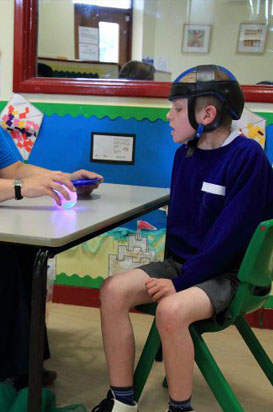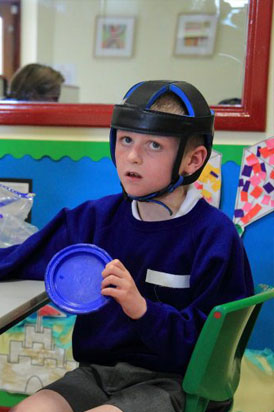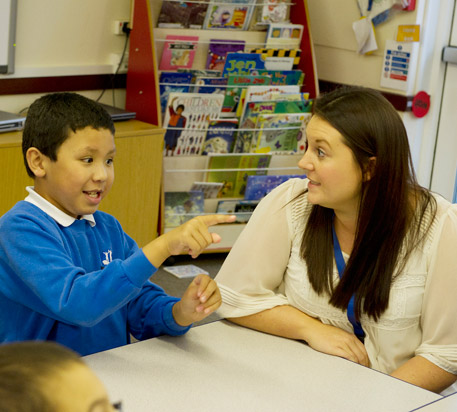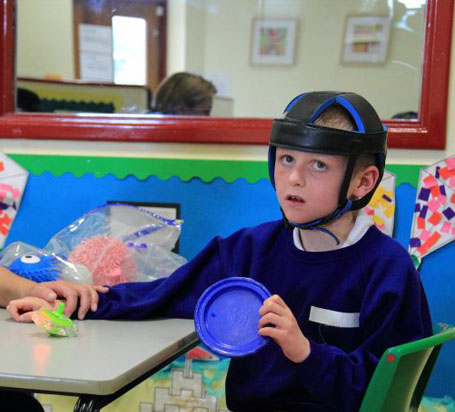
Here we focus on the understanding and use of mathematical vocabulary, including terms used to describe properties and relationships. A teaching sequence is suggested, providing a guide on what to teach and when.
In the Living Language programme Anne Locke lists a vocabulary of properties and relationships which consists of just over 200 basic words – adjectives, adverbs, prepositions, etc. These words are grouped in four levels of increasing difficulty and unfamiliarity.
Many of these words are likely to be introduced in the earliest stages of mathematics teaching or in basic science activities. The assignment of items to particular levels is tentative and teachers are urged to vary the order in which items are to be taught, if that seems appropriate for the individual pupil.
Teaching mathematical vocabulary
In the EQUALS Guide to Teaching Mathematics, Les Staves discusses how we can help pupils to understand the special language of mathematics. Some words are specifically mathematical but there are also many everyday words that sometimes have mathematical meaning. We should not assume that pupils understand the nuances of meaning of this vocabulary.
A great deal of experience is required to learn the number words and how to use them in counting. Children do not necessarily understand the vocabulary that we use in number work. Les Staves points out a few possible examples of confusion, eg:
- 'Won' and 'one', or 'two' and 'too', or 'add' and 'had' are potentially confusable by sound.
- Some 'mathematical' words or phrases have different meanings in different contexts, such as 'what is the difference' or 'take away'.
Teaching mathematical vocabulary
Les Staves gives a list of vocabulary that might be used in number work. In the document linked to below, the first page shows some of the mathematical vocabulary organised into a teaching sequence as suggested some years before by Anne Locke. The second page shows vocabulary suggested by Les Staves that does not feature in Anne Locke's list.
In 2000, an even longer Mathematical Vocabulary list for the primary school years was produced for the National Numeracy Strategy.
When you look at the list consider how much of this vocabulary teachers use in informal, everyday language in the classroom.
Is this informal use of language going to help children with learning difficulties to grasp the meaning of different words and phrases?

You will find that a structured approach to the teaching and learning of vocabulary is essential if children are to move on and begin using the correct mathematical terminology as soon as possible.
You need to find out the extent of their mathematical vocabulary and the depth of their understanding, and build on this.
You need to plan the introduction of new words in a suitable context, for example, with relevant real objects, mathematical apparatus and pictures. You will need to explain their meanings carefully and rehearse them over and over. You need to encourage appropriate use of the vocabulary, perhaps in response to judicious questioning.

Read the following document on teaching basic concepts.
Most concrete words present no difficulties but more abstract words often mean many things and have many different usages, or their meaning is only relative. Can you think of some examples of both?

Devise a test of some elements of the vocabulary of experience.
Begin with the understanding of vocabulary associated with relatively concrete concepts, such as size, selected from the mathematical vocabulary list.
You may find it helpful to create a simple proforma based on the teaching sequence as suggested by Anne Locke to record the assessments you make.

Les Staves (2009) The EQUALS Guide to Teaching Mathematics North Shields: EQUALS